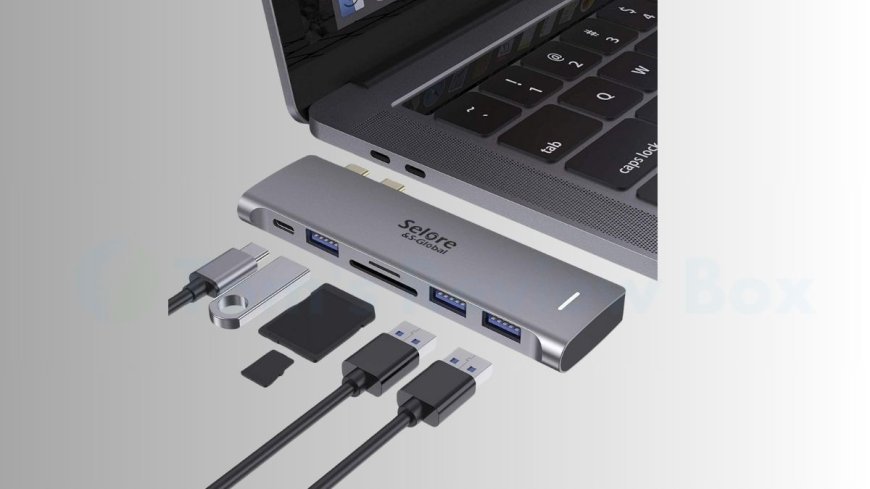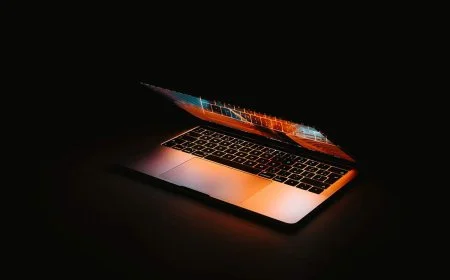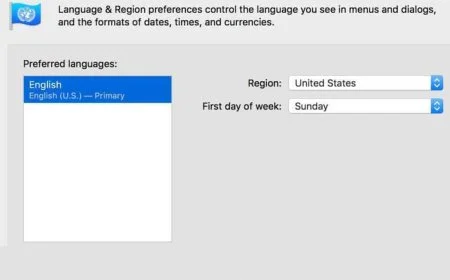USB Ports on MacBook Air Not Working: Troubleshooting Guide
Troubleshoot and fix USB ports on MacBook Air not working with our comprehensive guide. Get your ports up and running again easily.

Are your USB ports on MacBook Air not working when you need them the most due to hardware issues? Frustrating, right? Don't worry; we've got you covered. In this post, we'll delve into common reasons such as hardware issues why your MacBook Air's USB ports may be acting up, provide practical solutions like rebooting to get them back up and running smoothly. From software glitches to hardware issues, we'll explore troubleshooting steps that can help resolve the problem without breaking a sweat. Stay tuned to discover how to tackle this pesky issue and regain full functionality of your USB ports on your trusty MacBook Air.
Key Takeaways
- Understanding USB-C Issues: Recognize that USB-C problems on MacBook Air can stem from various sources, including software glitches or hardware malfunction
- Initial Troubleshooting Steps: Start by simple actions like restarting your MacBook Air, resetting the SMC, or trying different USB-C ports to address common USB issues.
- Advanced Diagnostics: If basic steps fail to fix the issue, delve deeper by checking system information, running diagnostics tests, or using third-party software to pinpoint the root cause.
- Specific Solutions: Explore tailored fixes like updating macOS, resetting NVRAM, or using a USB-C hub to resolve specific USB-C problems effectively.
- Preventive Measures: Safeguard your MacBook Air's USB-C functionality by avoiding physical damage, using quality cables, and keeping software up to date to prevent future issues.
- Seeking Professional Help: When all else fails, don't hesitate to consult Apple Support or visit an authorized service provider for expert assistance in resolving persistent USB-C troubles.
Understanding USB-C Issues
Signs of Malfunction
Devices like keyboards or drives not recognized when plugged into USB ports can indicate underlying issues with the USB-C functionality. Error messages highlighting USB connection problems are another common sign of malfunction. Inconsistent charging or data transfer may also point towards USB port troubles.
Common Causes
- Dust and debris accumulation in USB-C ports can hinder proper connectivity, leading to malfunction.
- Physical damage to USB ports, such as bent pins or broken connectors, can disrupt the connection.
- Corrupted USB drivers caused by malware infiltration can result in malfunctioning USB ports.
Initial Troubleshooting Steps
Restart Your Mac
To address issues with USB ports on MacBook Air, begin by restarting your device. Turn it off and then back on to reset system configurations. This simple action can often resolve minor software glitches causing the problem.
Inspect USB-C Ports
Ensure that your USB-C ports on the device are free from dust, debris, or any foreign objects that may be obstructing the connection. Check for any signs of discoloration or charring on the ports, which could indicate hardware damage to usb devices. Verify that there is a proper physical connection between your devices and the ports.
Malware Check
Perform a thorough scan of your MacBook Air device to detect any viruses or malware that might be affecting the USB functionality. Look out for potential corruption in USB drivers caused by malicious software. Removing any harmful programs can help restore normal operation to your USB ports.
Advanced Diagnostics
Run Apple Diagnostics
Perform hardware tests to detect issues. Follow specific steps for Apple silicon or Intel-based Macs. Identify and address any hardware-related problems.
Reset SMC
MacBook
- Troubleshooting steps specific to MacBook models.
- Differentiate between MacBook Air and MacBook Pro.
- Address USB port issues on various MacBook versions.
Desktop Models
- Troubleshooting steps for iMac, Mac mini, and Mac Pro.
- Identify and resolve USB port problems on desktop Mac models.
- Follow specific instructions for desktop hardware configurations.
Reset PRAM/NVRAM
Steps to reset PRAM/NVRAM on Intel-based Macs. Resolve USB-C issues through PRAM/NVRAM reset. Fix potential USB port problems by resetting PRAM/NVRAM.
Specific Solutions
Apple Silicon Macs
To troubleshoot USB port problems on Apple Silicon Macs, begin by checking for any software glitches. Restart the device to reset the system and potentially resolve the issue. If the problem persists, ensure that the USB device is working correctly by testing it on another computer.
Consider resetting the System Management Controller (SMC) on your M1 Mac. To do this, shut down the MacBook Air, then press and hold the power button for 10 seconds before releasing it. Wait a few seconds and then turn on your Mac again. This can often fix connectivity issues with USB ports.
For more advanced troubleshooting, you can try resetting the NVRAM (non-volatile random-access memory). Shut down your M1 Mac and then turn it back on while holding down Option + Command + P + R keys simultaneously until you hear the startup sound twice. Release the keys, and your NVRAM should be reset.
Remember that Apple Silicon hardware may have different compatibility requirements compared to Intel-based Macs. Ensure that any peripherals or devices you are connecting to your M1 MacBook Air are compatible with Apple's latest architecture.
Intel-Based Macs
When dealing with USB port problems on Intel-based Macs, start by verifying if other ports are working fine to isolate the issue. If only one port is malfunctioning, it might indicate a hardware problem specific to that port that needs reset.
For Intel-based Mac models, troubleshooting steps may involve checking for physical damage or debris inside the USB port that could be obstructing proper connection. Use a flashlight to inspect for any foreign objects or bent pins that may be causing connectivity issues.
Differentiate troubleshooting methods based on older Mac hardware as they might have distinct compatibility constraints compared to newer models like M1 MacBook Air. Updating macOS and drivers can sometimes resolve compatibility issues, ensuring smooth operation of your USB ports.
If basic troubleshooting steps including resetting do not resolve the problem, consider seeking professional assistance from an authorized Apple service provider or visit an Apple Store for further diagnosis and repair options.
Preventive Measures
Regular Maintenance
Regular cleaning and maintenance play a crucial role in ensuring the smooth functioning of USB ports on your MacBook Air. Dust and debris can accumulate over time, leading to connectivity issues. By cleaning the ports regularly with compressed air or a soft brush, you can prevent such problems. avoid inserting damaged or bent connectors into the ports to prevent any physical damage.
- Importance of regular cleaning and maintenance
- Preventive measures to keep USB ports functional
- Extend the lifespan of USB ports through proper care
Safe Ejection Practices
Safely ejecting USB devices is not just a courtesy but a necessity to maintain data integrity and protect your USB ports. Improperly removing devices can result in data corruption and even damage to the ports themselves. Always follow safe ejection protocols by using the "Eject" option in macOS before unplugging any USB device.
- Importance of safely ejecting USB devices
- Prevent data corruption by following safe ejection protocols
- Avoid potential damage to USB ports by ejecting devices correctly
Software Updates
Keeping your macOS system up-to-date is essential for ensuring compatibility with various hardware components, including USB drivers. Make sure to install all available software updates regularly to address any underlying issues that could be affecting your USB ports' performance. Check for specific updates related to USB drivers or connectivity to ensure optimal functionality.
- Stay up-to-date with macOS software updates
- Ensure USB drivers are compatible with the latest OS version
- Address USB port issues through system updates
Seeking Professional Help
When to Contact Support
Seek professional help if troubleshooting steps fail. Apple Support can provide advanced assistance for persistent USB port issues. It's crucial to know when to escalate problems beyond basic solutions.
- Contact Apple Support for expert advice and guidance.
- Ensure all basic troubleshooting steps have been attempted before seeking professional help.
Warranty and Repairs
Understanding warranty coverage is essential for USB port repairs. Explore repair options available for addressing malfunctioning ports. Be aware of your rights concerning faulty USB ports under warranty.
- Pros: Access to expert advice and specialized repair services.
- Cons: Potential costs involved in repairs outside the warranty coverage.
Summary
You've learned how to troubleshoot USB port issues on your MacBook Air, from basic steps to advanced diagnostics and specific solutions. Remember to follow preventive measures to avoid future problems. If you still face issues, seek professional help. By taking these actions, you can ensure your MacBook Air's USB ports work efficiently, saving you time and frustration.
Frequently Asked Questions
How can I identify USB-C issues on my MacBook Air?
To identify USB-C issues, check for physical damage, try different USB devices, inspect the port for debris, and verify compatibility. Update your system and reset SMC/NVRAM if needed.
What are the initial troubleshooting steps for non-working USB ports on a MacBook Air?
Initially, restart your MacBook Air, try different ports and cables, check for software updates, and run Apple Diagnostics. Resetting the SMC and NVRAM can also resolve many issues.
What advanced diagnostics can be performed for malfunctioning USB ports on a MacBook Air?
Performing advanced diagnostics involves using third-party diagnostic tools to check hardware functionality, testing in Safe Mode, checking system logs for errors related to USB devices.
What specific solutions can help fix USB port problems on a MacBook Air?
Specific solutions include reinstalling macOS, updating firmware if available, resetting the System Management Controller (SMC), performing a clean installation of macOS.
How can I prevent future USB port issues on my MacBook Air?
To prevent future USB port issues, avoid using excessive force when plugging in devices, keep ports clean and free of debris, use high-quality cables and adapters that are compatible with your MacBook Air.
When should I seek professional help for USB port problems on my MacBook Air?
If you have tried all troubleshooting steps without success or suspect hardware failure, it's advisable to seek professional help from an authorized Apple service provider or technician.
What's Your Reaction?







































![MacBook Pro M5: All the features and specs you need to know [LEAKS REVEALED]](https://tomsreviewbox.com/uploads/images/202502/image_430x256_67bd6d7cd7562.jpg)




























